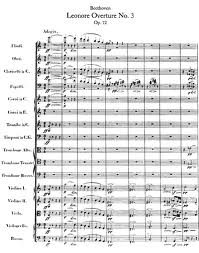Beethoven wrote only one opera, Fidelio (originally entitled Leonore). It is the story of Florestan, a young man who is unjustly imprisoned. His wife, Leonore, disguised as a young man, Fidelio, helps her husband to escape and liberates all other prisoners who have been wrongly imprisoned. Leonore No. 3 Overture was one of four overtures that Beethoven composed for his only opera. The overture was composed in 1806, and was first performed in Vienna on March 29 of the same year.
The overture begins with a slow introduction partially based on Florestan’s aria “In the Springtime of Youth” from Act II. The sonata allegro that follows the extended introduction, by its enormous power, variety of emotions and orchestral richness, could be compared with a symphonic movement.
A key moment in the overture is the trumpet call before the coda. This call corresponds to the moment in the opera, when Fidelio is saved by his courageous beloved Leonore. Although today most musicians consider Leonore No.3 to be the best of the three Leonore overtures, it is very rarely performed as an actual overture to the opera because its monumental character completely overshadows most of the plot of the opera. Instead, today the overture has its own independent place in the orchestral repertoire along with Beethoven’s symphonies.
"Leonore" Overture No. 3
Op. 72B
Composed in 1806
By Ludwig van Beethoven






